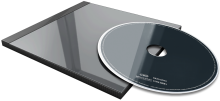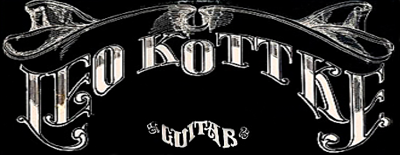Cover NOT yet available in
Join Patreon for 4K upload/download access
Your Rating (Click a star below)
![]()
![]()
![]()
![]()
![]()
![]()
![]()
![]()
![]()
![]()
Track List
01) The Driving of the Year Nail
02) The Last of the Arkansas Greyhounds
03) Ojo
04) Crow River Waltz
05) The Sailor's Grave on the Prairie
06) Vaseline Machine Gun
07) Jack Fig
08) Watermelon
09) Jesu, Joy of Man's Desiring
10) The Fisherman
11) The Tennessee Toad
12) Busted Bicycle
13) The Brain of the Purple Mountain
14) Coolidge Rising
01) The Driving of the Year Nail
02) The Last of the Arkansas Greyhounds
03) Ojo
04) Crow River Waltz
05) The Sailor's Grave on the Prairie
06) Vaseline Machine Gun
07) Jack Fig
08) Watermelon
09) Jesu, Joy of Man's Desiring
10) The Fisherman
11) The Tennessee Toad
12) Busted Bicycle
13) The Brain of the Purple Mountain
14) Coolidge Rising
1:59
3:19
2:17
3:23
2:35
3:13
2:18
3:12
2:26
2:34
2:42
2:50
2:13
2:47
Data Complete
 40%
40%
Total Rating
 40%
40%Total Rating
![]() (0 users)
(0 users)
Back Cover![]()
CD Art
3D Case
3D Thumb
3D Flat
3D Face
3D Spine
First Released
![]() 1969
1969
![]() ---
---
![]() ---
---
![]() ---
---
![]() ---
---
![]() Medium
Medium
![]() Album
Album
![]() 0 copies
0 copies
Album Description
Available in:
6- and 12-String Guitar is the second album by Leo Kottke, a solo instrumental steel-string acoustic guitar album originally released by John Fahey's Takoma Records in 1969. It is popularly known as the Armadillo album after the animal illustrated in the distinctive cover art (by Annie Elliott). Although Kottke has had a prolific career as a recording artist, 6- and 12-String Guitar remains his best-known album.
The album showcases Kottke's early, hard-driving polyphonic finger-picking style (which eventually led to his developing tendinitis and having to change his playing approach). Even at the fastest tempos the notes are clean and crisp, with a distinctive tone. The album was recorded in one afternoon, in exactly the running order of the album. Most tracks were done in a single take. Kottke doesn't even pause when a string breaks (audibly) on "The Sailor's Grave on the Prairie." In the liner notes to Anthology he states, "We didn't know about sequencing, so the record is in the order it was recorded...The record took three-and-a-half hours to do, and all I had to do was sit down and play everything I ever knew."
True to its title, the album contains performances on both 6- and 12-string acoustic guitars, some using a slide. Although Kottke has included vocals in other albums, this album is all instrumental – the reason being, as Kottke explains in the liner notes, his voice "sounds like geese farts on a muggy day."
All the tracks were written by Kottke except Jesu, Joy of Man's Desiring, Kottke's arrangement of the familiar Bach piece.
The album had a large influence on, and was an inspiration for, guitarist Michael Hedges, who would later tour with Kottke.
This album has been re-released as an SACD.

User Album Review
None...
External Album Reviews
None...
User Comments


Available in:
6- and 12-String Guitar is the second album by Leo Kottke, a solo instrumental steel-string acoustic guitar album originally released by John Fahey's Takoma Records in 1969. It is popularly known as the Armadillo album after the animal illustrated in the distinctive cover art (by Annie Elliott). Although Kottke has had a prolific career as a recording artist, 6- and 12-String Guitar remains his best-known album.
The album showcases Kottke's early, hard-driving polyphonic finger-picking style (which eventually led to his developing tendinitis and having to change his playing approach). Even at the fastest tempos the notes are clean and crisp, with a distinctive tone. The album was recorded in one afternoon, in exactly the running order of the album. Most tracks were done in a single take. Kottke doesn't even pause when a string breaks (audibly) on "The Sailor's Grave on the Prairie." In the liner notes to Anthology he states, "We didn't know about sequencing, so the record is in the order it was recorded...The record took three-and-a-half hours to do, and all I had to do was sit down and play everything I ever knew."
True to its title, the album contains performances on both 6- and 12-string acoustic guitars, some using a slide. Although Kottke has included vocals in other albums, this album is all instrumental – the reason being, as Kottke explains in the liner notes, his voice "sounds like geese farts on a muggy day."
All the tracks were written by Kottke except Jesu, Joy of Man's Desiring, Kottke's arrangement of the familiar Bach piece.
The album had a large influence on, and was an inspiration for, guitarist Michael Hedges, who would later tour with Kottke.
This album has been re-released as an SACD.
User Album Review
None...
External Album Reviews
None...
User Comments

No comments yet...

